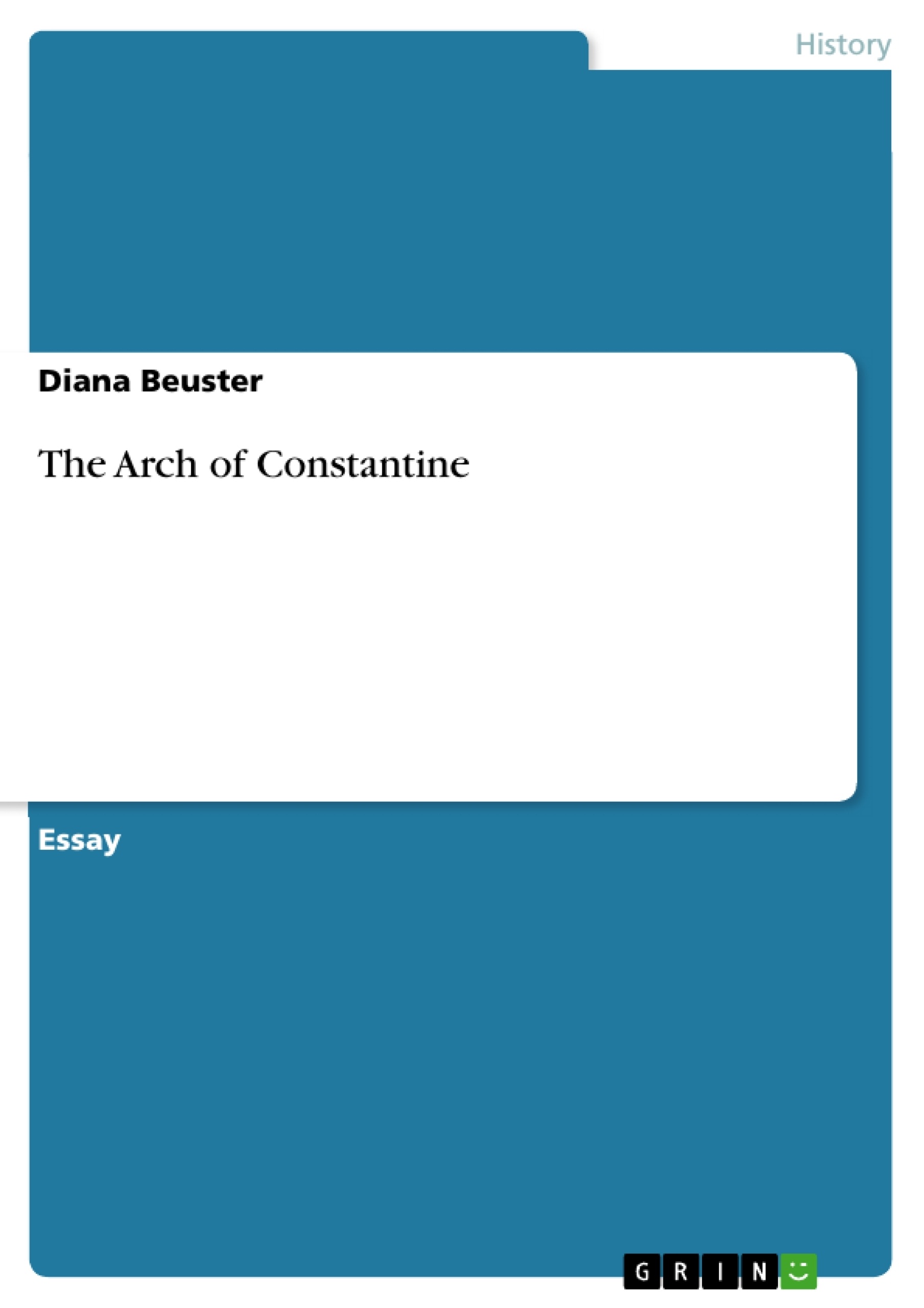The Arch of Constantine and its historical relief frieze containing the victory over Maxentius however commemorates the victory in a civil war between two Romans, which is unlike to almost all the other commemorating monuments in the Roman Empire.
Table of Contents
- The Arch of Constantine
- The Arch of Constantine
- The Decoration of the Arch
- The Main Facade
- The Main Inscription
- The Relief Panels
- The Dacian War Reliefs
- The Round Reliefs (Tondi)
- The Historical Relief Frieze
Objectives and Key Themes
This text provides a comprehensive overview of the Arch of Constantine, a triumphal arch in Rome. It examines the monument's historical context, its construction, and its intricate decoration.
- The origins and purpose of the Arch of Constantine
- The use of spolia (reused materials) in its construction
- The artistic style and symbolism of the arch's decoration
- The historical significance of the arch as a commemoration of Constantine's victory over Maxentius
- The debate surrounding the interpretation of the inscription and its religious implications
Chapter Summaries
- The Arch of Constantine: This chapter introduces the arch, its location in Rome, and the historical context of its construction. It details the monument's dimensions and construction materials.
- The Decoration of the Arch: This chapter explores the arch's intricate decoration, focusing on the use of spolia, the re-use of materials from earlier monuments. It discusses how these materials, primarily from the reigns of Trajan, Hadrian, and Marcus Aurelius, give new meaning in the context of the Constantinian building.
- The Main Facade: The chapter examines the design and composition of the arch's main facade, including the four columns, their bases, and the spandrels.
- The Main Inscription: This section delves into the main inscription above the middle archway, its content, and its historical significance. It also explores the debate surrounding its interpretation and its possible religious implications.
- The Relief Panels: The chapter analyzes the four pairs of relief panels flanking the inscription, their origin, date, and the scenes they depict. The panels are linked to the reigns of Marcus Aurelius and Lucius Verus.
- The Dacian War Reliefs: This section focuses on the two large panels decorating the attic on the small sides of the arch, and the two reliefs inside the central archway. These reliefs, which originally depicted Trajan's Dacian Wars, have been reinterpreted to feature Constantine.
- The Round Reliefs (Tondi): The chapter examines the eight round reliefs (tondi) above each lateral archway, their original placement, their depiction of hunting and sacrificing scenes, and the reworking of Hadrian's image to include Constantine and other figures.
- The Historical Relief Frieze: This section explores the historical relief frieze running around the monument, its subject matter, and its significance in commemorating Constantine's victory over Maxentius in the Italian campaign.
Keywords
The key terms and concepts explored in this text include: The Arch of Constantine, spolia, Constantine, Maxentius, triumphal arch, Roman architecture, Late Antiquity, historical relief frieze, Trajan, Hadrian, Marcus Aurelius, INSTINCTV DIVINITATIS, pagan deities, Christian deity, Roman Empire, civil war, victory, decoration, symbolism, re-use, art history.
- Quote paper
- M.A. Diana Beuster (Author), 2007, The Arch of Constantine, Munich, GRIN Verlag, https://www.grin.com/document/128678




